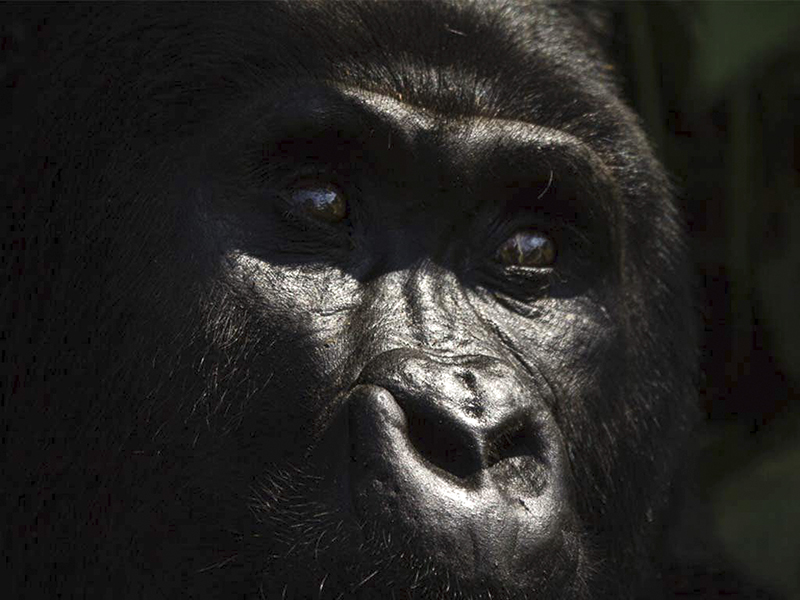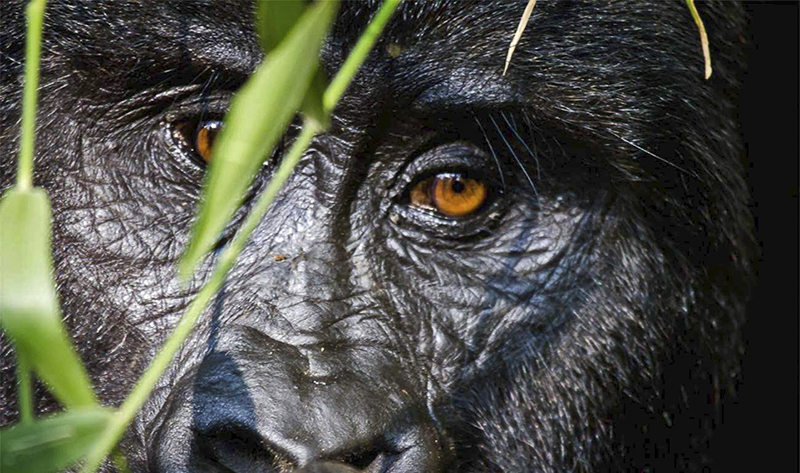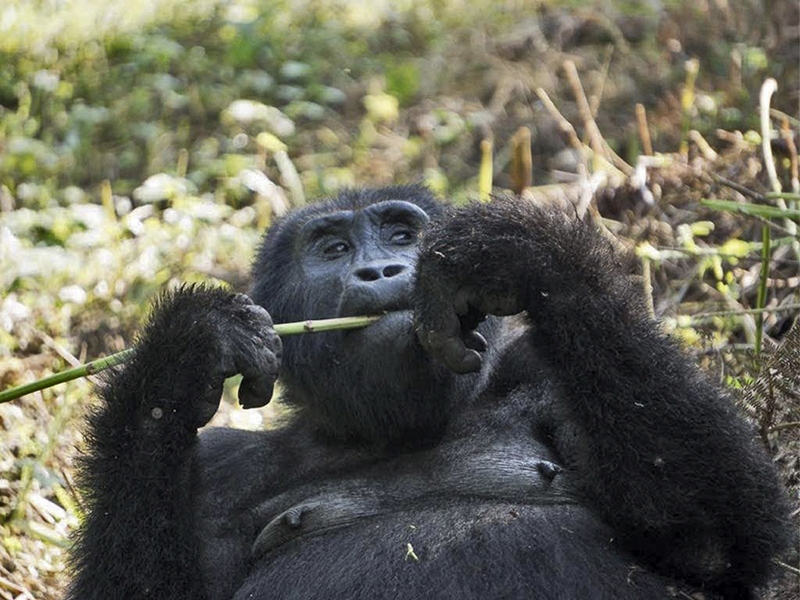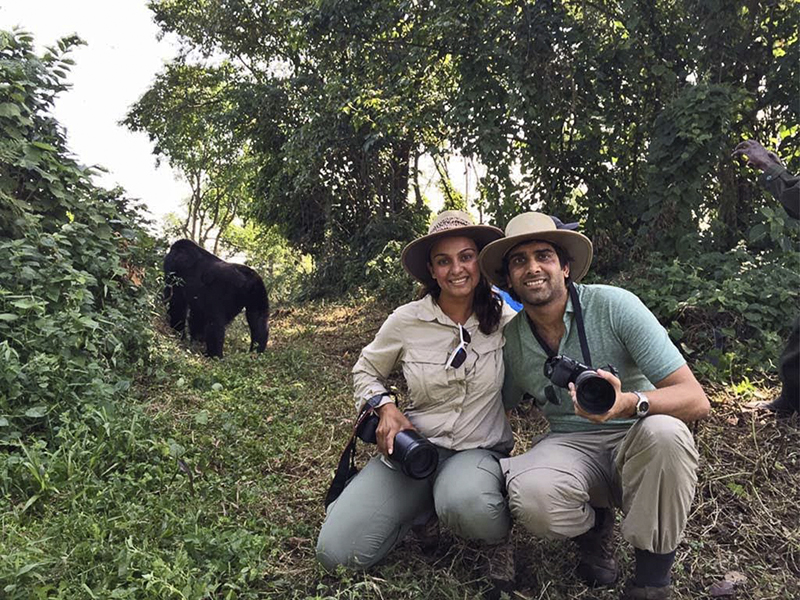Interview With: David Agenya
Head Gorilla Tracking Guide at Bwindi Impenetrable Forest
Experience: 11 Years

What made you decide to get into the Conservation of Gorillas?
I grew up in the Eastern Uganda district of Sorot, with a family who had lots of cows. I spent my childhood in close proximity and therefore, I developed a love for them. It was because of my love of animals, that I decided I wanted to protect animals. Living in Uganda and having over half the worlds population of mountain gorillas, therefore I felt that they needed most help. Moreover, the Gorillas are an endangered species. I took up a tourism course and received my diploma in Tourism Management & Hospitality.

What did it take for you to get into Conservation?
In 2004 I decided to join the Uganda Wildlife Authority (UWA) and I was taken to different trainings.
- Data Collection.
- Forest Patrols – monitoring that there were no illegal activities going on.
- General Surveillance.
- Customer Care.
- First Aid.
- Data Analysis.
- Nature Interpretation.
- High Front Line Interpretation & Customer Care – which was organized by Twin Parks – Queen Elizabeth National Park based in the U.K.
- Gorilla Health Monitoring.
- Mountain Rescue (for clients).

What is your most memorable experience with a gorilla?
It was a really unbelievable experience – when a gorilla gave birth in my presence! I remember the experience vividly. I had a group of six visitors tracking with me that day and when we were spending time watching the gorillas, the Silverback beat his chest, it was then I knew that something unique was taking place. I told the visitors to stay calm and at the same time I picked up my machete and started clearing the area where the Silverback was facing. When I moved closer, I saw an adult female making a nest and noticed blood stains on her. I signed to the visitors to come closer to where I was and they all hurried towards me and we all witnessed the female giving birth. The visitors were all taking pictures but when I turned to my right, I saw one of them crying – with tears of joy. She kept telling me that it was one of the most emotional experiences she has had. The birth took seven minutes, but when the baby gorilla was being born, something quite scary for me happened, it was one of the juvenile gorillas and he started to pull the baby! My heart sank as I thought the baby was going to be killed and there was nothing I could do as nature would have to take its course. Fortunately events turned and the mother got her baby and began the cleaning process of motherhood.

You mentioned the Gorillas are habituated – what does this mean?
It is important to know that Gorillas are wild animals, however, there is a habituation process that we go through with the gorillas in order to make it safe for tourists to visit them. Habituation is the process of getting a gorilla group accustomed to humans, thereby facilitating interactions without showing signs of shyness, aggression & defensiveness.
The habituation process takes up to two years, with the first step identifying a gorilla family and collecting data to understand how many members belong to the family. After that we begin the process of following the family from a far distance, in order to maintain a faint presence. As the gorillas start to get used to us following them, they see that we are following their behaviors it shows that we are like them, not there to harm them. As they get more and more used to us we are able to follow from a closer distance.

Do you find conflict between the communities and wildlife authorities?
What happens when the Gorillas come into the community land?
We have trained people – ‘Human Gorillas’ to help chase them back to their protected areas. If there is no one in the area we go there out of our uniforms to chase the gorillas back. If we go in uniform the gorillas know us, they know we will do no harm.

When people hear ‘Gorillas’ – they automatically think Rwanda – why is it that they don’t think about Uganda?
Good words move slowly, it because very few people read good words!
Do you think the travel distances make an impact on Ugandas tourism industry?
I don’t think it has a big effect. Our road system is getting much better and helping to connect areas better. We also have small planes for tourists to visit the different parks. Guests also visit us through Rwanda and cross over into Uganda.

How do you see the future of Bwindi and the gorilla population? Is it increasing? Is it doing well?
Well, Bwindi’s future is really very interesting because the gorilla population is increasing slowly but surely. According to the September/October 2011 Gorilla Census, we confirmed we had up to 480 Mountain Gorillas in Uganda with 400 living in the Bwindi Impenetrable Forest area, this is because of good protection and we know this because the number of babies in the families is growing.
Everything’s fine, no doubt – staff are motivated, the hotels around are giving good services, so the future is really bright.

Thank you David for this great insight.
Thank you and for everyone who is reading this interview, I encourage you to follow up and I look forward to welcome you to Bwindi. You can always catch up with me on the ground – I’ll be around giving the morning briefings and leading the treks.

